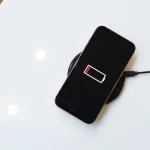LR-WPAN (Low Rate Wireless Personal Area Network) is a low-speed wireless network technology for short-range communication.
LR-WPAN is designed so that devices can send and receive small amounts of data. This technology is suitable for IoT applications and smart devices that need to be active for long periods.
Unlike WPAN used in Bluetooth or WiFi, LR-WPAN is more energy efficient does not support large data transfers, and that is suitable for power-efficient devices. LR-WPAN is ideal for sensors, smart home devices, and low-power health devices.
Also Read
This article will try to help you get to know LR-WPAN from the main components of this network to its application in various industries.
Table of Contents
Main Components of LR-WPAN

To work efficiently, LR-WPAN relies on network components such as:
- Coordinator: Responsible for starting and managing the network. The coordinator organizes the flow of communication in the LR-WPAN network.
- Routers: Devices that extend the reach of the network by connecting various devices. Routers enable communication between devices that are far away from the coordinator.
- End devices: Devices that only receive and send data without affecting the overall network.
LR-WPAN uses various star, mesh, and peer-to-peer topologies. In the mesh topology, all devices can be interconnected, thus providing high flexibility for large areas.
In terms of frequency, LR-WPAN operates in several ranges, including 2.4 GHz for general use, as well as 868 MHz and 915 MHz which are often used in specialized applications. These frequency ranges support low transmission power, making them suitable for devices that must operate energy-efficiently.
The Advantages of LR-WPAN

LR-WPAN is ideal for IoT applications due to the following advantages:
Power saving
This technology allows devices to operate for long periods without the need to change batteries frequently, making it suitable for devices such as environmental sensors and health monitors.
Flexible
The mesh topology of LR-WPAN allows devices to be connected in an interconnected network, without requiring a direct path to the network center. This can extend coverage and flexibility, especially in large areas.
Scalability and security
LR-WPAN supports networks that can be enlarged by adding new devices while providing data encryption to keep the transmitted information secure.
The Challenges of Low-Rate WPAN Deployment
Despite having several benefits, LR-WPAN deployments also face challenges, such as:
Mesh network complexity
Building and managing a mesh network with many devices requires careful planning, especially if the network involves hundreds of interconnected devices.
Limited range and interference
The communication distance in LR-WPAN is limited, and the heavy use of the 2.4 GHz frequency can cause interference with other devices.
Security and privacy
LR-WPAN needs to be designed with extra security in mind, especially in applications involving personal or sensitive data.
The Assembling of LR-WPAN in Various Industries

The use of LR-WPAN continues to expand in various industries due to its advantages in saving energy and reliable connectivity. Here are some examples of LR-WPAN applications in various industries:
- Manufacturing and Industry 4.0: LR-WPAN supports automation in factories through wireless monitoring of machine conditions and production processes thereby increasing efficiency and reducing the need for manual intervention.
- Health and medical: LR-WPAN is used in health monitoring devices, such as blood pressure measuring devices, which continuously transmit data to other devices for remote monitoring.
- Smart agriculture: In agriculture, sensors connected to LR-WPAN can collect data on soil moisture, temperature, and weather conditions, helping farmers optimize irrigation and fertilization.
That is information related to LR-WPAN network components, its advantages for IoT, the challenges of its use, and its application in various industrial sectors. Hopefully, this information can help you find out more about LR-WPAN.
It should be noted that all LR-RAN products in circulation must go through standardized tests and get certification from the Type Approval Certification Services for Wireless and Telecommunication Devices in your country.


















